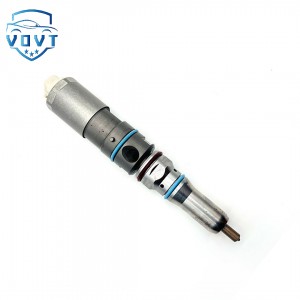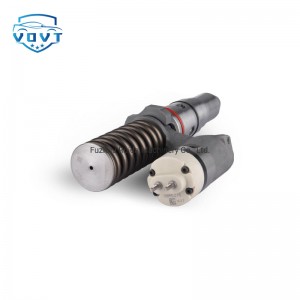New High Quality Diesel Injector 153-2875 191-3003 10R-8501 200-1117 211-3022 10R-0956 For CAT C15
Products Description
| Reference. Codes | C13E |
| Application | C13E |
| MOQ | 4PCS |
| Certification | ISO9001 |
| Place of Origin | China |
| Packaging | Neutral packing |
| Quality Control | 100% tested before shipment |
| Lead time | 7~10 working days |
| Payment | T/T, L/C, Paypal, Western Union, MoneyGram or as your requirement |
Flow characteristics of the injector
The flow characteristics of the injector refer to the changing law of the fuel flow of the injector under different working conditions, which has a vital impact on the performance and emissions of the diesel engine. The following will introduce the flow characteristics of the injector in detail from the aspects of definition, influencing factors and impact on the engine.
Basic definition
The flow characteristics of the injector are usually described by injection rate and cumulative injection amount. The injection rate refers to the amount of fuel sprayed by the injector per unit time, and the unit is mg/ms or mm³/ms, etc.; the cumulative injection amount refers to the total amount of fuel sprayed by the injector during the entire injection process, and the unit is mg or mm³, etc. The flow characteristic curve of the injector is generally expressed with time as the horizontal axis and injection rate or cumulative injection amount as the vertical axis.
Influencing factors
Injection pressure: Injection pressure is one of the key factors affecting the flow characteristics of the injector. When other conditions remain unchanged, the higher the injection pressure, the faster the flow rate of the fuel through the injector nozzle, and the greater the injection rate. This is because high pressure can enable the fuel to overcome the resistance of the nozzle and spray faster. For example, when the injection pressure increases from 100MPa to 200MPa, the injection rate may increase several times, so that the fuel is sprayed into the combustion chamber in a shorter time, which is conducive to the rapid mixing and full combustion of fuel and air.
Nozzle diameter and number: The diameter and number of nozzles directly determine the flow area of the fuel. The larger the nozzle diameter and the more the number, the stronger the fuel flow capacity. Under the same injection pressure, the injection rate and the cumulative injection amount will increase. Generally speaking, in order to achieve better fuel atomization and uniform distribution, modern diesel engine injectors usually adopt a design of multiple small-diameter nozzles, which can not only ensure a certain fuel flow rate, but also enable the fuel to form a more ideal spray shape in the combustion chamber.
Injection time: The injection time refers to the duration of the injector from the start of injection to the end of injection. When the injection rate remains unchanged, the longer the injection time, the more the cumulative injection amount. The engine requires different amounts of fuel under different working conditions. The cumulative injection amount is adjusted by controlling the injection time to meet the power requirements of the engine. For example, when the engine is idling, the injection time is short and the injection amount is small; while under high-speed and high-load conditions, the injection time will be extended and the injection amount will increase.
Fuel characteristics: The viscosity, density and other characteristics of the fuel will also affect the flow characteristics of the injector. Fuels with higher viscosity will encounter greater resistance when passing through the spray hole, resulting in a lower injection rate and longer injection time. Fuels with different densities will have different mass flows at the same volume flow rate. Therefore, when using different types or qualities of fuel, the flow characteristics of the injector may change, and the injection parameters need to be adjusted accordingly.
Impact on engine performance and emissions
Power performance: Appropriate flow characteristics can ensure that the engine obtains sufficient fuel supply under different operating conditions, thereby outputting corresponding power. If the flow characteristics of the injector do not match the engine operating conditions, such as too low injection rate or insufficient cumulative injection amount under high load, the engine power will decrease and the acceleration performance will deteriorate.
Fuel economy: Optimized flow characteristics can make the fuel burn more fully in the combustion chamber, improve fuel utilization, and reduce fuel consumption. For example, by precisely controlling the injection time and injection rate, the fuel and air are burned at the optimal mixing ratio, which can reduce fuel waste and achieve better fuel economy.
Emission characteristics: Good flow characteristics help reduce engine emissions. When the injection rate and injection time are properly controlled, the fuel can be evenly distributed and fully burned in the combustion chamber, reducing the emission of unburned hydrocarbons (HC), carbon monoxide (CO) and particulate matter (PM). In addition, reasonable flow characteristics can also optimize the generation of nitrogen oxides (NOx) by controlling parameters such as combustion temperature and pressure, thereby improving comprehensive emission performance.























